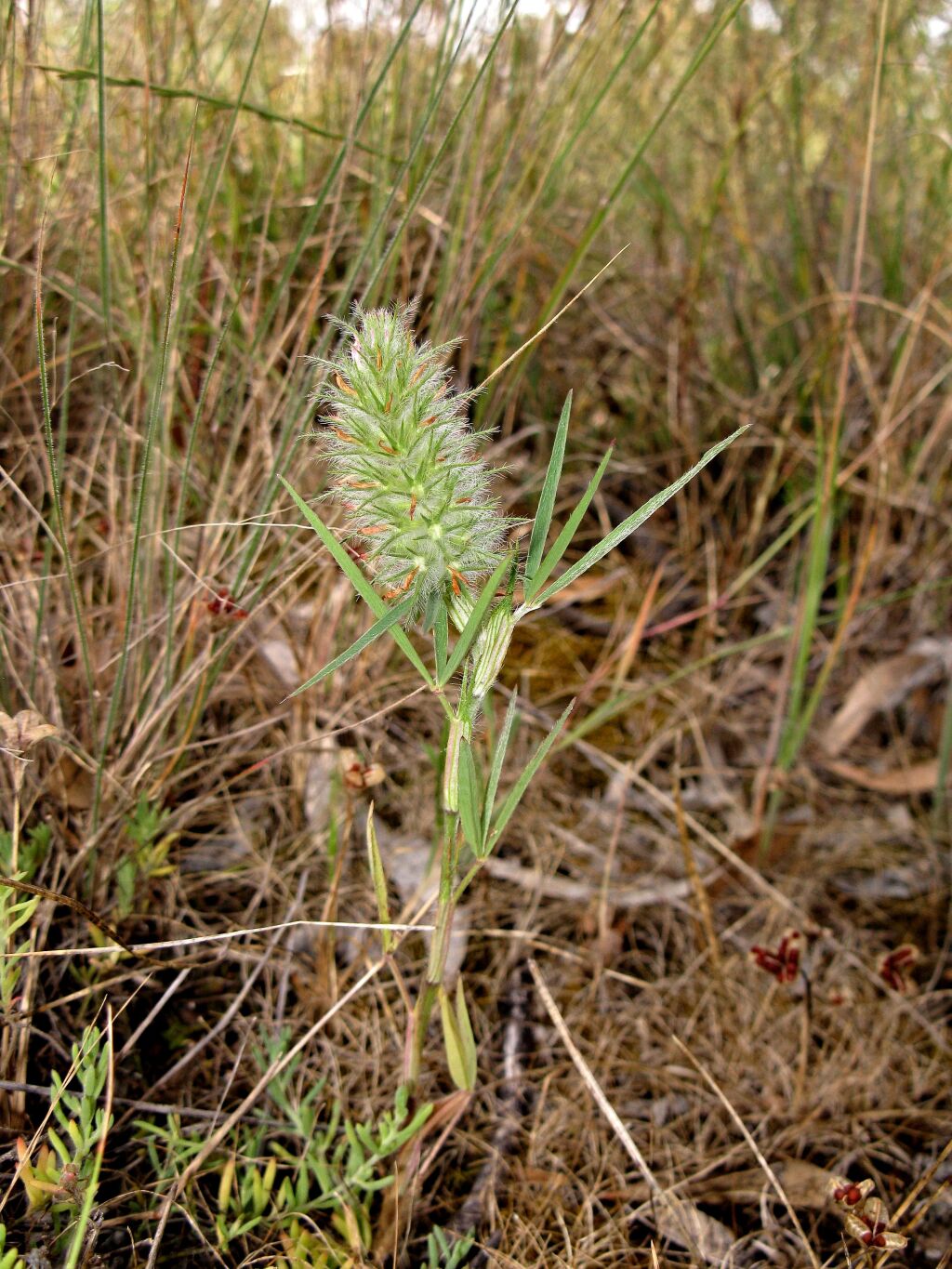Trifolium angustifolium var. angustifolium
Narrow-leaved CloverErect or ascending annual herb; stems 10–35 cm long, scarcely branched, appressed- or subappressed-hirsute. Leaves palmately trifoliolate, petiolate; leaflets linear-lanceolate, 30–70 mm long, 2–5 mm wide, appressed-pubescent, more or less entire, acute to obtuse; stipules many-veined, partly adnate to petioles. Inflorescence many-flowered, terminal, spicate, cylindric or conical, 30–80 mm long, 5–15 mm wide, pedunculate; flowers sessile. Calyx to 10 mm long, covered with appressed to spreading hairs, tube cylindric-campanulate, 10-veined, throat closed by 2-lipped callosity in fruit, teeth about as long as tube, spreading stellately in fruit, unequal, spiny; corolla 8–13 mm long, white, pink or almost purple, not persistent; standard notched. Pod ovoid, c. 2 mm long, membranous, included in calyx tube; seed 1 or rarely 2, ovoid, c. 2 mm long, light brown. Flowers mainly Sep.–Dec.
LoM, MuM, Wim, GleP, VVP, VRiv, MuF, GipP, OtP, WaP, Gold, CVU, GGr, DunT, NIS, EGU, HSF, HNF, OtR, Strz, VAlp. Naturalised all States except NT. Native to parts of northern Africa, Eurasia. Well-established weed throughout much of Victoria particularly north of the Great Dividing Range.
Zohary & Heller (1984) recognize 2 varieties, apparently only the type variety occurring in Victoria; var. intermedium Gibelli & Belli differs in having petioles longer than leaflets and blunt calyx teeth.
Jeanes, J.A. (1996). Fabaceae. In: Walsh, N.G.; Entwisle, T.J., Flora of Victoria Vol. 3, Dicotyledons Winteraceae to Myrtaceae, pp. 663–829. Inkata Press, Melbourne.
 Spinning
SpinningZohary M.; Heller, D. (1984). The genus Trifolium. Israel Academy of Sciences and Humanities, Jerusalem.
